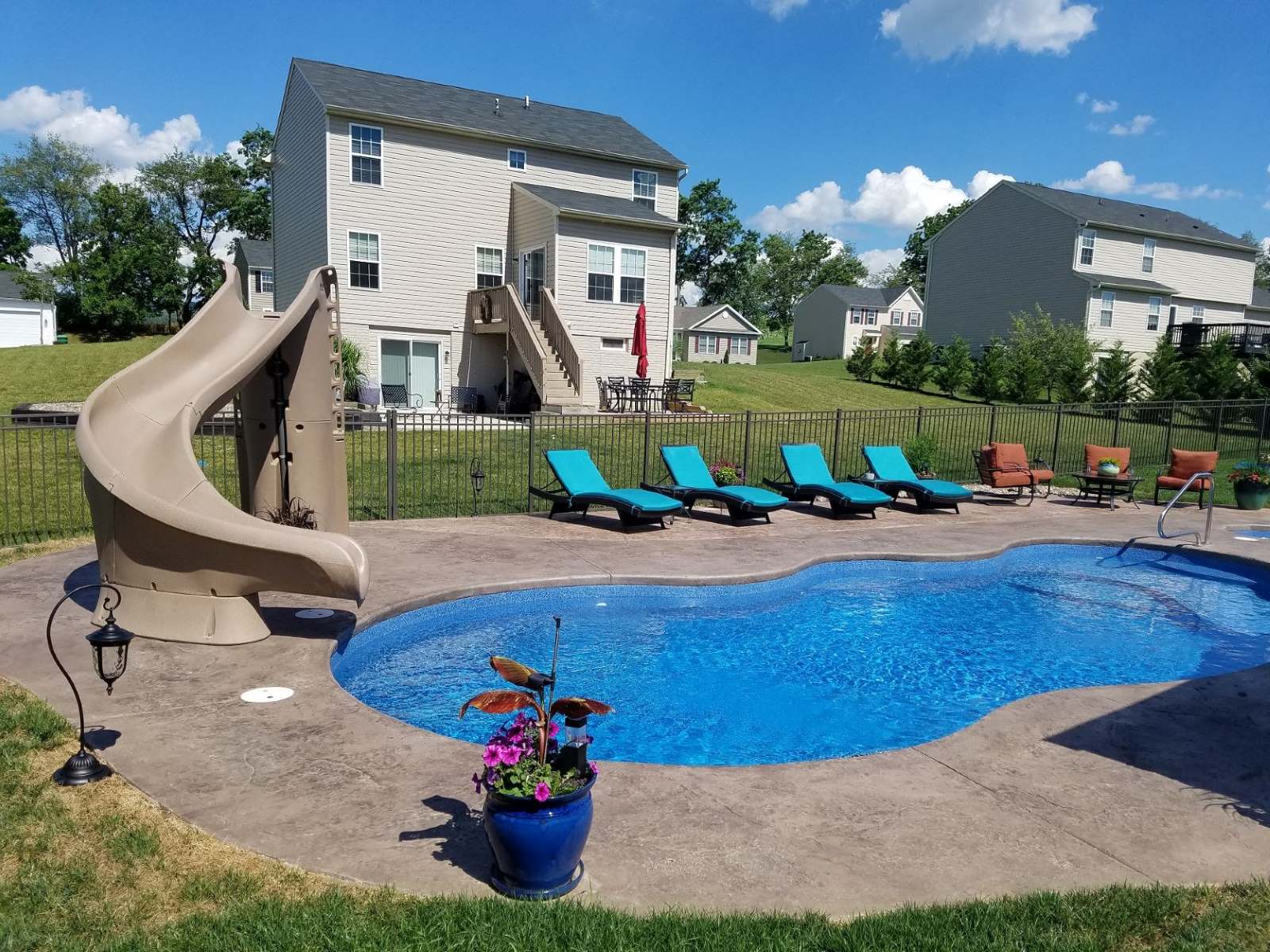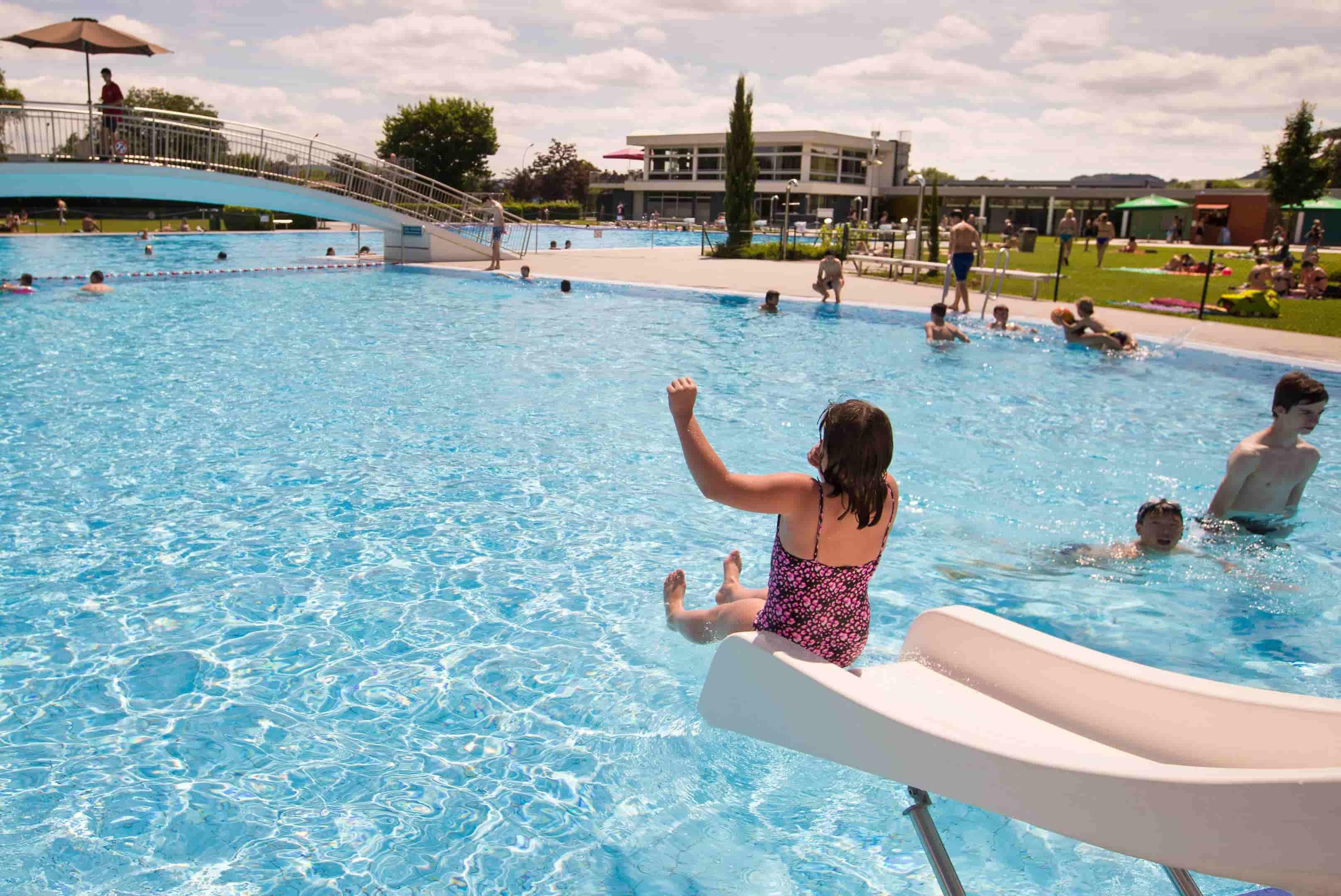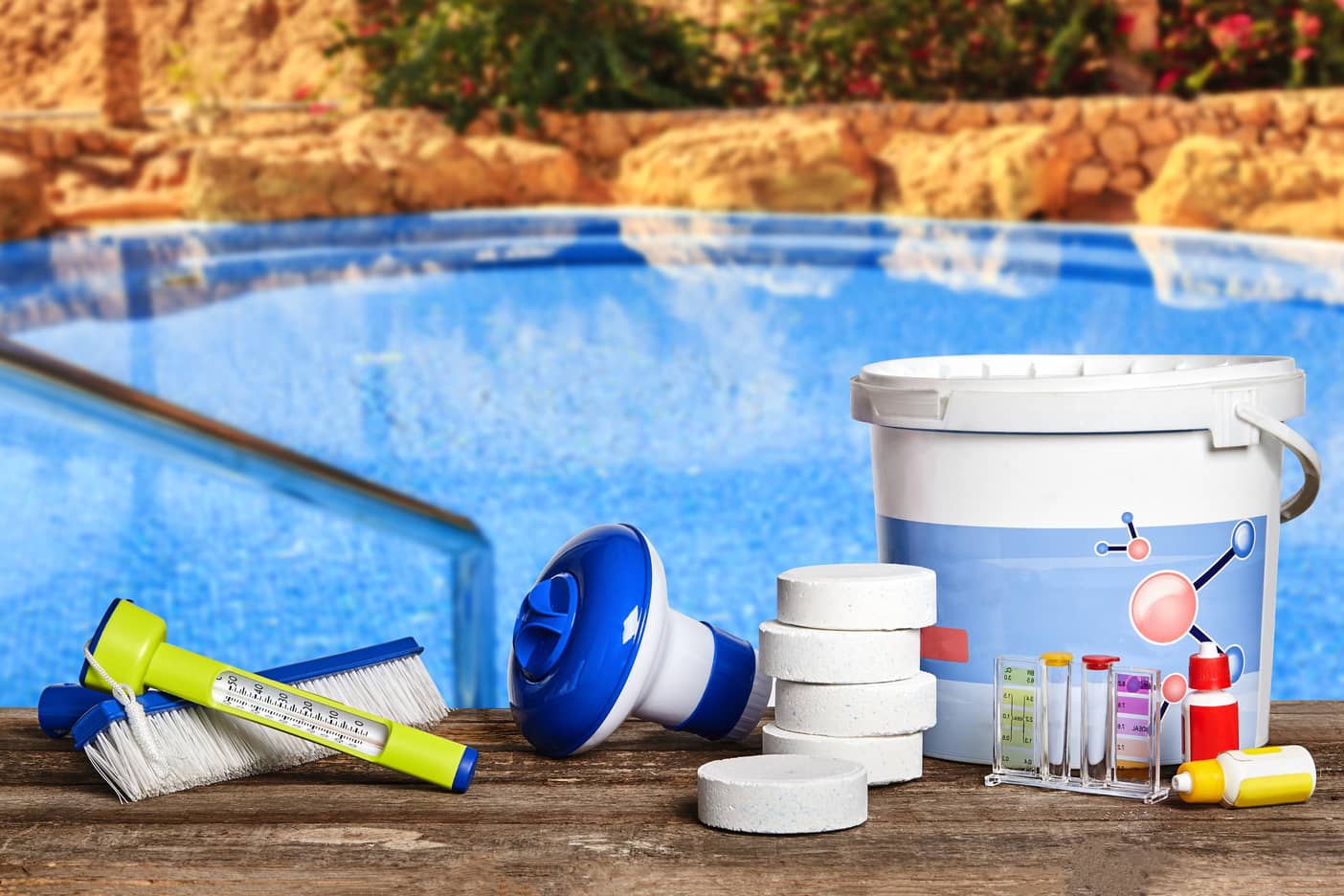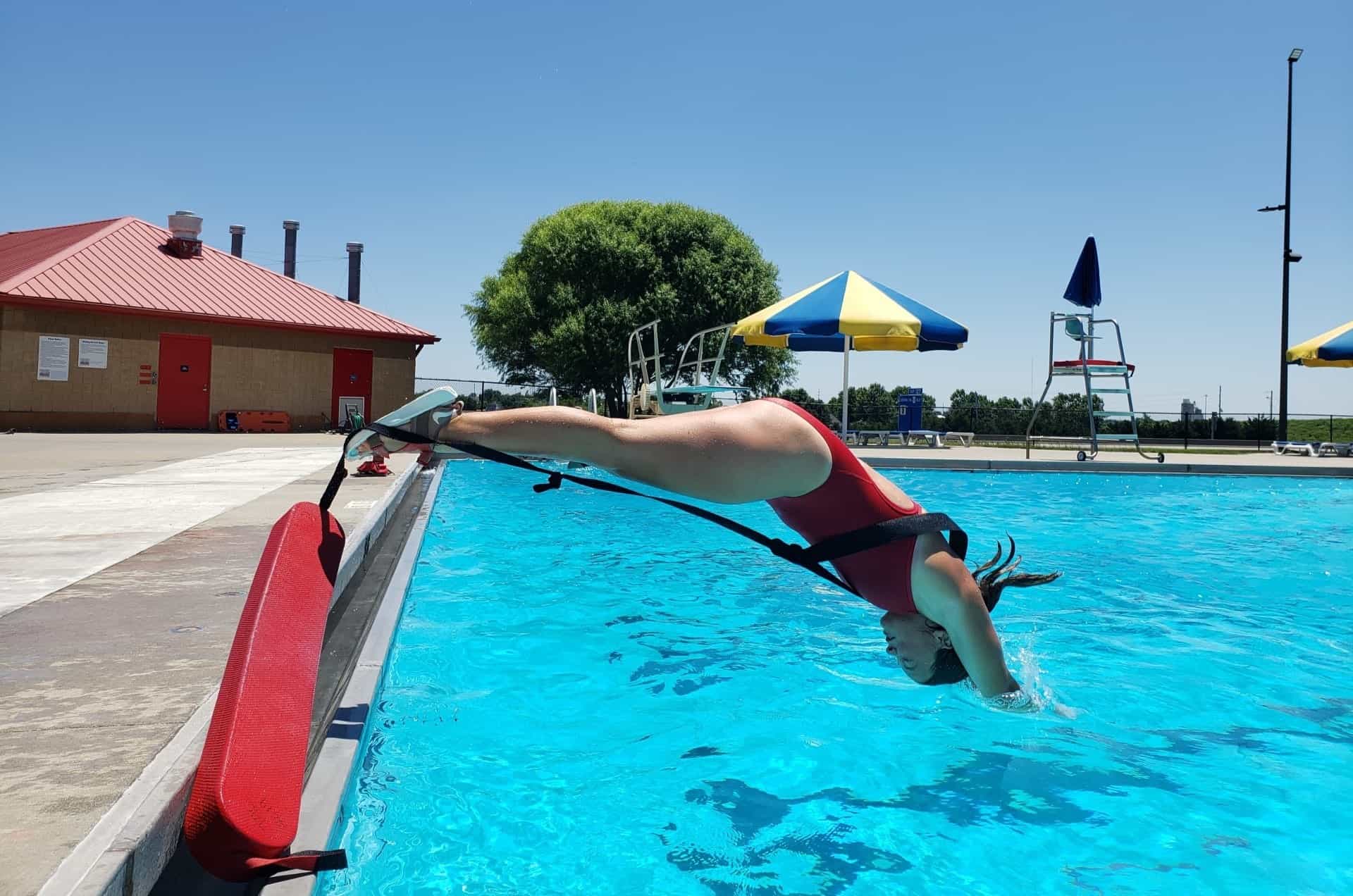Home>Gardening & Outdoor>Outdoor Recreation & Activities>How To Set Up A Swimming Pool


Outdoor Recreation & Activities
How To Set Up A Swimming Pool
Modified: February 18, 2024
Learn how to set up a swimming pool for outdoor recreation and activities with our comprehensive guide. Get expert tips and advice for creating the perfect outdoor oasis.
(Many of the links in this article redirect to a specific reviewed product. Your purchase of these products through affiliate links helps to generate commission for Storables.com, at no extra cost. Learn more)
Choosing the Right Location
Selecting the perfect location for your swimming pool is crucial for ensuring a safe, enjoyable, and long-lasting aquatic experience. Here's how to make the right choice:
-
Sunlight Exposure: Opt for a spot that receives an adequate amount of sunlight throughout the day. Sunlight not only helps to naturally warm the water but also inhibits the growth of algae and bacteria.
-
Accessibility: Consider the accessibility of the chosen location. It should be easily reachable from your home and have a clear, unobstructed path for transporting pool equipment and supplies.
-
Level Ground: Ensure that the ground is level and free from any obstructions such as tree roots, rocks, or sharp debris. A level surface is essential for the stability and structural integrity of the pool.
-
Proximity to Utilities: Position the pool within a reasonable distance from water and electricity sources. This will facilitate the filling of the pool and the operation of filtration and maintenance equipment.
-
Privacy and Aesthetics: Evaluate the surrounding landscape for privacy and aesthetics. A secluded area shielded from neighboring properties and adorned with natural elements such as trees or shrubbery can enhance the ambiance of your pool oasis.
-
Local Regulations: Familiarize yourself with local regulations and zoning laws pertaining to pool installation. Compliance with these guidelines is essential to avoid potential legal issues in the future.
By carefully considering these factors, you can ensure that your swimming pool is situated in an ideal location, setting the stage for countless hours of relaxation and enjoyment in the water.
Key Takeaways:
- Choose a sunny, level, and private location for your pool, close to utilities. Follow local regulations for a safe and enjoyable swimming experience.
- Prepare the ground carefully, assemble the pool components, fill it evenly, and maintain water quality for a pristine and inviting pool.
Read more: How To Fill Up A Swimming Pool
Preparing the Ground
Preparing the ground for your swimming pool is a critical step that sets the foundation for a stable and durable installation. Proper ground preparation not only ensures the structural integrity of the pool but also contributes to its longevity and safety. Here's a detailed guide on how to prepare the ground for your swimming pool:
-
Clearing the Area: Begin by clearing the designated area of any debris, rocks, roots, and other obstructions. It's essential to create a clean and level surface to prevent damage to the pool liner and framework.
-
Marking the Layout: Use stakes and string to mark the exact layout and dimensions of the pool. This step helps to visualize the space the pool will occupy and ensures accurate excavation.
-
Excavation: Excavate the marked area to the specified depth, accounting for the thickness of the pool base and the depth of the pool itself. The excavation should be uniform and level to provide a stable base for the pool.
-
Compaction: Once the excavation is complete, compact the soil thoroughly to create a firm and stable base. Proper compaction minimizes the risk of settling or shifting after the pool is installed.
-
Adding a Base Material: After compaction, add a layer of sand or a specialized pool base material to the excavated area. This material serves as a cushioning layer and helps to create a smooth and level surface for the pool bottom.
-
Leveling and Smoothing: Use a screed or leveling tool to ensure that the base material is evenly distributed and leveled. This step is crucial for preventing uneven settling and maintaining the structural integrity of the pool.
-
Verifying Dimensions: Double-check the dimensions and layout of the prepared ground to ensure that it aligns with the specifications provided by the pool manufacturer. Accuracy in this stage is vital for a seamless pool installation process.
-
Inspecting for Debris: Before proceeding with the pool assembly, carefully inspect the prepared ground for any remaining debris, rocks, or sharp objects. Removing any foreign objects at this stage can prevent damage to the pool liner.
By meticulously following these steps, you can effectively prepare the ground for your swimming pool, laying the groundwork for a successful and enduring installation. Proper ground preparation is a fundamental aspect of creating a safe, stable, and aesthetically pleasing aquatic retreat in your own backyard.
Assembling the Pool
Assembling the pool is an exciting phase that brings you one step closer to enjoying your own aquatic oasis. Following the manufacturer's instructions and safety guidelines is paramount to ensure a smooth and successful assembly process. Here's a comprehensive guide on how to assemble your swimming pool:
-
Laying Out the Pool Components: Unpack all the components of the pool and lay them out in an organized manner. Take inventory of the parts to ensure that everything is accounted for before commencing the assembly.
-
Framework Assembly: Begin by assembling the framework of the pool according to the provided instructions. This typically involves connecting the metal or resin framework pieces to form the structure of the pool.
-
Installing the Liner: Carefully position and install the pool liner inside the assembled framework. Smooth out any wrinkles or creases to ensure a snug and uniform fit. Proper installation of the liner is crucial for the overall aesthetics and functionality of the pool.
-
Securing the Walls: Secure the pool walls in place, ensuring that they are properly aligned and supported by the framework. This step is essential for maintaining the structural integrity and stability of the pool structure.
-
Adding Support Bracing: Depending on the design of the pool, adding support bracing or buttressing may be necessary to reinforce the walls and enhance the overall stability of the pool structure.
-
Filling the Pool: Once the pool components are assembled and secured, begin filling the pool with water. Monitor the filling process to ensure that the water level is even and that the pool components settle into place as the water exerts pressure on the structure.
-
Connecting Filtration and Plumbing: As the pool fills with water, proceed to connect the filtration system and plumbing components according to the manufacturer's instructions. Proper installation of these essential components is vital for maintaining water clarity and quality.
-
Testing and Adjusting: After the pool is filled, conduct a thorough inspection to check for any leaks, irregularities, or issues with the pool components. Make any necessary adjustments or repairs to ensure that the pool is in optimal condition.
-
Safety Measures: Install safety features such as pool ladders, handrails, and safety covers as per the manufacturer's recommendations and local regulations. Prioritizing safety measures is crucial for creating a secure and enjoyable swimming environment.
By meticulously following these steps and adhering to the manufacturer's guidelines, you can successfully assemble your swimming pool, bringing your vision of a refreshing and inviting aquatic retreat to life.
Filling the Pool
Filling the pool is a pivotal stage that marks the transformation of a structure into a refreshing aquatic haven. As the crystal-clear water begins to flow, the anticipation of enjoying the pool's delights becomes palpable. Here's a detailed insight into the process of filling the pool and the essential considerations involved.
Water Source and Quantity
Before initiating the filling process, it's crucial to determine the water source and the quantity required to reach the optimal water level. Depending on the pool size, this may involve utilizing a garden hose connected to a residential water supply or arranging for a water delivery service for larger pools. Calculating the exact volume of water needed ensures an efficient and precise filling process.
Even Distribution
As the water flows into the pool, it's essential to ensure an even distribution to prevent uneven settling of the pool components. This can be achieved by positioning the hose at a central location in the pool and periodically adjusting its placement as the water level rises. Maintaining an even distribution of water promotes uniform settling of the pool structure and facilitates accurate monitoring of the filling progress.
Monitoring the Water Level
Throughout the filling process, diligent monitoring of the water level is imperative. This involves regularly checking the water level against the recommended height specified by the pool manufacturer. Attaining the correct water level is essential for optimal pool functionality and aesthetics, ensuring that the filtration system operates effectively and that the pool's visual appeal is enhanced.
Settling and Adjustment
As the pool fills with water, the components may gradually settle into place, necessitating periodic adjustments. This may involve smoothing out any wrinkles or creases in the pool liner, ensuring that the walls are uniformly supported, and verifying the stability of the pool structure. Careful observation and proactive adjustments contribute to the overall integrity and visual appeal of the pool.
Water Quality Considerations
In addition to focusing on the quantity and distribution of water, attention to water quality considerations is paramount. Depending on the water source, it may be necessary to address issues such as water hardness, pH levels, and the presence of impurities. Implementing water testing and treatment measures at this stage sets the foundation for maintaining pristine and inviting pool water.
Completion and Celebration
Upon reaching the optimal water level and ensuring the stability and quality of the pool water, the filling process nears completion. This milestone marks the realization of the pool's physical form, setting the stage for the enjoyment of countless aquatic adventures and relaxation. With the pool filled and ready for use, it's time to celebrate the successful completion of this transformative phase.
By meticulously overseeing the filling process and attending to the essential considerations, you can ensure that your swimming pool is primed for enjoyment, offering a refreshing and inviting aquatic retreat right in your own backyard.
Adding Chemicals and Maintenance
Maintaining the pristine condition of your swimming pool involves a combination of diligent chemical treatment and regular maintenance practices. This essential aspect of pool ownership ensures that the water remains clean, safe, and inviting for swimmers while preserving the longevity of the pool structure. Here's a comprehensive guide on adding chemicals and performing maintenance to keep your pool in optimal condition.
Water Testing
Regular water testing is the cornerstone of effective pool maintenance. Utilize a reliable water testing kit to assess crucial parameters such as pH levels, chlorine or sanitizer concentration, alkalinity, and calcium hardness. These measurements provide valuable insights into the overall water quality and guide the subsequent chemical treatment and maintenance actions.
Balancing Chemical Levels
Based on the results of the water testing, adjust the chemical levels to achieve optimal balance. This typically involves adding chemicals such as chlorine, pH adjusters, alkalinity increasers or decreasers, and calcium hardness stabilizers as needed. Balancing the chemical levels ensures that the water is sanitized, comfortable for swimmers, and conducive to the longevity of pool equipment.
Read more: How Deep Is A Swimming Pool
Chlorine Treatment
Chlorine plays a pivotal role in disinfecting the pool water and preventing the growth of algae and harmful bacteria. Regularly adding the appropriate amount of chlorine to the pool helps maintain a sanitary environment, effectively eliminating contaminants and safeguarding the health of swimmers.
Shock Treatment
Periodic shock treatment is essential to address organic contaminants, chloramine buildup, and other impurities that may compromise water clarity and hygiene. This process involves adding a concentrated dose of shock treatment chemicals to the pool, effectively oxidizing and eliminating contaminants to restore water clarity and freshness.
Filtration and Circulation
Proper filtration and circulation are vital for maintaining clean and clear pool water. Regularly inspect and clean the pool filter, ensuring that it functions optimally to remove debris and impurities. Additionally, adequate water circulation, facilitated by the pool pump, promotes uniform chemical distribution and enhances overall water quality.
Skimming and Vacuuming
Regular skimming of the pool surface and vacuuming of the pool floor and walls are essential maintenance practices. These activities effectively remove leaves, insects, and other debris, preventing them from decomposing and affecting water quality. Consistent skimming and vacuuming contribute to a visually appealing and hygienic pool environment.
Read more: How To Draw A Swimming Pool
Brushing and Surface Maintenance
Periodically brushing the pool walls and surfaces helps prevent the buildup of algae, scale, and other contaminants. This proactive maintenance practice not only preserves the aesthetic appeal of the pool but also minimizes the risk of surface damage and staining.
Winterization and Seasonal Maintenance
For pools in seasonal climates, proper winterization is crucial to protect the pool during colder months. This involves adjusting chemical levels, draining water from equipment, and implementing protective measures to prevent damage from freezing temperatures. Additionally, regular seasonal maintenance, including equipment inspections and cleaning, ensures that the pool is ready for use when the swimming season resumes.
By diligently adhering to these chemical treatment and maintenance practices, you can uphold the pristine condition of your swimming pool, providing a safe, inviting, and enjoyable aquatic retreat for you and your family. Regular attention to water quality, filtration, and overall pool maintenance is key to preserving the beauty and functionality of your pool for years to come.
Frequently Asked Questions about How To Set Up A Swimming Pool
Was this page helpful?
At Storables.com, we guarantee accurate and reliable information. Our content, validated by Expert Board Contributors, is crafted following stringent Editorial Policies. We're committed to providing you with well-researched, expert-backed insights for all your informational needs.












0 thoughts on “How To Set Up A Swimming Pool”